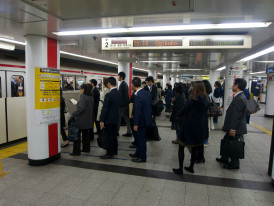
Passengers queuing at ticket gates during morning rush Photo by Marek Lumi on Unsplash
After living in Osaka for over a decade, I've perfected the art of escaping to Kyoto without joining the tour bus parade. While other tourists pile into cramped coaches, I slip onto efficient trains that deliver me to ancient temples and bamboo groves in under an hour. My approach to easy day trips from Osaka to Kyoto centers on strategic timing, smart station choices, and maximizing the JR network.
The difference between a rushed tour and a memorable trip lies in the details. I've learned which trains actually save time, when to visit each temple to avoid crowds, and how to structure an itinerary that flows naturally from one district to another.
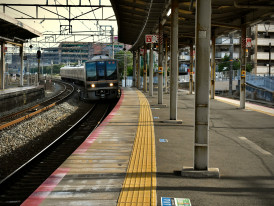
Hankyu train at Umeda Station platform Photo by shun idota on Unsplash
Where to Begin: Choosing Your Departure Station
Your departure station in Osaka determines more than just travel time—it shapes your entire day trip experience. I've tested every major route, and each station serves different travelers and destinations better than others.
JR Osaka Station remains my go-to choice for most Kyoto adventures. The station connects directly to the JR Tokaido Main Line, offering both local and Special Rapid services to Kyoto Station. Most importantly, JR Osaka Station provides the most frequent departures, with trains leaving every few minutes during peak hours.
Shin-Osaka Station works best if you're staying near the Shinkansen terminal. However, the walk between platforms here can add unexpected time to your journey, especially during busy periods when tourists cluster around information desks.
Umeda Station serves as an excellent alternative when JR Osaka Station feels too crowded. The Hankyu Kyoto Line from Umeda delivers you directly to central Kyoto districts like Kawaramachi and Gion, bypassing Kyoto Station entirely.
Namba Station in southern Osaka connects to the Kintetsu Kyoto Line, which terminates at Kyoto Station's south side. I recommend this route for afternoon departures when other lines experience heavy commuter traffic.
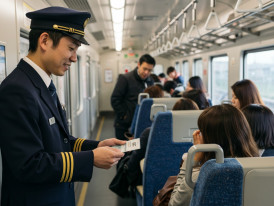
Train conductor checking JR passes
What Makes the JR Pass Essential
The JR Pass transforms day trips from Osaka to Kyoto from expensive ventures into affordable adventures. For day trips from Osaka, the Kansai Area Pass offers the best value, covering JR trains throughout the Kansai region plus local JR lines within Kyoto city.
From JR Osaka Station, you'll primarily use Special Rapid and Rapid services. Both accept JR Pass holders, but Special Rapid trains reach Kyoto Station in just 29 minutes compared to Rapid service's 43-minute journey.
The JR Pass also covers local JR lines within Kyoto, including the JR Nara Line that connects Kyoto Station to Fushimi Inari Taisha.

Local train at smaller station platform Photo by Da-shika on Unsplash
Understanding Train Types and Speed
Special Rapid trains represent the sweet spot for Osaka-Kyoto travel, stopping only at major stations and completing the journey in approximately 29 minutes. During morning hours, they depart every 15 minutes.
Standard Rapid trains add 10-15 minutes by stopping at intermediate stations like Suita and Ibaraki, but run more frequently at 7-8 minute intervals during peak hours.
Local trains take 50-60 minutes but provide guaranteed seating during rush hours when express services pack with standing passengers.

JR Nara Line train at Kyoto Station. Photo by Christopher Stites on Unsplash
Why Start Early at Fushimi Inari
Fushimi Inari Taisha deserves your morning energy and attention. This iconic shrine, famous for its thousands of vermilion torii gates winding up Mount Inari, transforms from serene spiritual space to crowded tourist attraction as the day progresses.
Arriving at Fushimi Inari by 8:30 AM grants access to an entirely different shrine experience. The main pathways remain relatively empty, allowing for contemplative walks through the torii tunnel without constant photo interruptions.
From Kyoto Station, board the JR Nara Line bound for Nara. Fushimi Inari Station sits just two stops away, requiring only 5 minutes of travel time. The station directly connects to the shrine grounds—no additional walking or navigation required.
The shrine complex extends far beyond the famous torii gates visible in photographs. The main trail to the summit takes 2-3 hours for fit hikers, but casual visitors can enjoy the lower sections in 45-60 minutes.
The most photographed section—the dense torii tunnel near the shrine's base—becomes nearly impossible to capture without crowds after 10 AM. Focus your photography efforts here first, then explore higher elevations where fewer tourists venture.

Bus stop sign showing Kinkakuji route Photo by Marek Lumi on Unsplash
Timing Your Golden Pavilion Visit
Kinkakuji Temple, known internationally as the Golden Pavilion, demands careful timing for optimal viewing conditions. The temple's gold-leaf exterior reflects differently throughout the day, and crowd management becomes crucial for meaningful visits.
The Golden Pavilion faces southeast across a carefully designed pond. Morning light from 9-11 AM illuminates the golden surfaces directly, creating brilliant reflections in the water.
The journey from Fushimi Inari to Kinkakuji requires strategic planning, as these sites sit on opposite sides of Kyoto. Return to Kyoto Station via the JR Nara Line, then transfer to city buses.
Bus 101 or 205 from Kyoto Station reaches Kinkakuji-michi stop in approximately 30 minutes, depending on traffic conditions. Alternatively, take the Keihan Line from Fushimi Inari to downtown Kyoto, then transfer to bus routes.
Kinkakuji receives over 5 million visitors annually, making crowd avoidance essential for quality experiences. Weekday visits between 10:30-11:30 AM typically encounter manageable crowds, as most tour groups either arrive earlier or later in their itineraries.
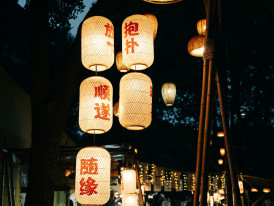
Traditional lanterns along Hanami-koji Photo by Merci L on Unsplash
Central Kyoto Walking Strategy
Central Kyoto reveals itself best through walking exploration rather than station-hopping. The districts of Gion, Pontocho, and Kawaramachi connect seamlessly on foot, creating opportunities for spontaneous discoveries that rigid itineraries miss.
From Kinkakuji, travel to central Kyoto via bus to Kawaramachi Station or Gion-Shijo Station. These stations serve as ideal starting points for walking exploration.
The circuit from Kawaramachi through Gion to Kiyomizu Temple covers approximately 2.5 kilometers of varied terrain and cultural experiences. Kawaramachi offers modern shopping and dining options alongside traditional architecture.
Gion, Kyoto's famous geisha district, requires respectful exploration strategies. The historic streets contain active tea houses, restaurants, and private residences—not theme park attractions.
The main streets of Hanami-koji and Shirakawa offer the most photogenic traditional architecture. Side streets contain hidden shrines, small temples, and local businesses that provide authentic glimpses into neighborhood life.
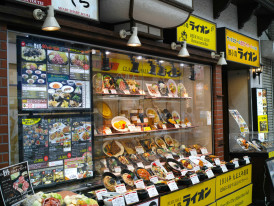
Department store food court scene Photo by Magic Mary on Unsplash
Smart Lunch Timing and Choices
Strategic lunch timing and location selection significantly impact day trip success. After morning temple visits and central Kyoto walking, your body needs fuel, but your schedule demands efficiency.
The optimal lunch window for Kyoto day trips falls between 12:30-1:30 PM. This timing avoids the peak lunch rush that overwhelms popular restaurants from 12:00-12:30 PM, while providing energy for afternoon temple visits or potential Nara extensions.
Location trumps reputation for day trip lunch choices. The best restaurant in Kyoto becomes irrelevant if reaching it consumes 45 minutes of travel time. I prioritize restaurants within walking distance of major afternoon destinations over highly-rated establishments requiring detours.
Near central Kyoto, family-run establishments along Kawaramachi and Gion side streets offer authentic experiences without tourist markup pricing. These restaurants typically display plastic food models outside, making menu selection simple despite language barriers.
Most traditional restaurants in Kyoto close between lunch and dinner service, typically from 2:30-5:00 PM. Plan lunch completion by 2:00 PM to avoid disappointment and maintain schedule flexibility for afternoon activities.
Cash remains the preferred payment method at traditional establishments. ATMs at 7-Eleven stores throughout central Kyoto provide reliable access to Japanese currency when needed.
Language barriers rarely create problems for lunch ordering. Point to menu pictures, use basic Japanese phrases like "kore onegaishimasu" (this please), and restaurant staff typically accommodate foreign visitors graciously.
Restaurant timing becomes especially important during peak tourist seasons. Many popular establishments fill up quickly between 12:00-1:00 PM, making strategic arrival timing crucial for day trip success.
Consider the walking distance from lunch venues to your next planned destination. Efficient routing saves time and energy for afternoon temple visits.
Some restaurants offer English menus, but don't rely on this availability. Learning basic food terms in Japanese enhances ordering confidence.
Group dining arrangements may require advance reservations at traditional restaurants. Solo travelers typically find more flexibility in seating availability.
Weather considerations affect lunch venue selection. Indoor restaurants provide comfort during rain, while outdoor terraces offer pleasant dining during mild seasons.
Budget planning should account for lunch costs ranging from ¥800 for convenience store meals to ¥3,000 for traditional restaurant experiences.
Food allergies and dietary restrictions require extra communication effort. Prepare key phrases or translation apps to convey specific needs to restaurant staff.
Local lunch customs include not talking loudly in restaurants and finishing everything on your plate to show appreciation. restaurants and finishing everything on your plate to show appreciation for the meal preparation.
Traditional Kyoto Lunch Options
Kaiseki lunch sets provide comprehensive introductions to Kyoto cuisine without evening ceremony requirements. Many temples offer simplified kaiseki presentations during lunch hours with seasonal ingredients.
Tofu cuisine represents Kyoto's Buddhist culinary traditions. Specialized restaurants near temples serve hot tofu in delicate broths with seasonal vegetables and rice.
Obanzai restaurants serve traditional Kyoto home cooking—small plates featuring local vegetables, fish, and seasonal preparations.
Budget-Friendly Lunch Alternatives
Department store restaurant floors offer high-quality prepared foods for budget-conscious travelers. Kyoto Station's restaurant floor provides options under ¥1,500 per person.
Convenience stores stock surprisingly good prepared meals, including onigiri, bento boxes, and seasonal specialties. Street food vendors offer yakitori, taiyaki, and traditional sweets for energy boosts between sightseeing stops.
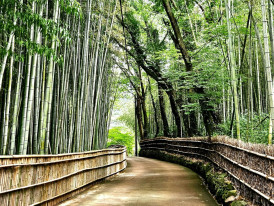
Path through Arashiyama bamboo grove Photo by SE YEON JEON on Unsplash
Afternoon Choice: Bamboo Grove or Nara?
Afternoon decision-making determines whether your day trip feels rushed or perfectly paced. After morning temple visits and central Kyoto exploration, you face interesting options: extend your Kyoto experience with iconic sites like Arashiyama's bamboo grove, or venture to nearby Nara.
Nara represents Japan's first permanent capital, predating Kyoto by centuries. The city centers around Nara Park, where over 1,200 sacred deer roam freely among historic temples and modern visitors.
The JR Nara Line connects Kyoto Station to Nara in just 45 minutes, making this extension feasible for day trips with good time management. Todaiji Temple in Nara houses Japan's largest bronze Buddha statue, an impressive sight that dwarfs most temple experiences in Kyoto.
The deer interaction experience in Nara offers something entirely unavailable in Kyoto. These sacred messengers bow for deer crackers and provide memorable photo opportunities, especially for travelers with children or animal enthusiasts.
Arashiyama's bamboo grove provides one of Japan's most photographed natural experiences. The dense bamboo creates cathedral-like pathways where filtered sunlight creates otherworldly atmospheric conditions.
The grove walk takes only 15-20 minutes but offers profound sensory experiences that justify the journey. Beyond bamboo, Arashiyama contains Tenryuji Temple with exceptional garden designs, plus the famous Togetsukyo Bridge spanning the Katsura River.
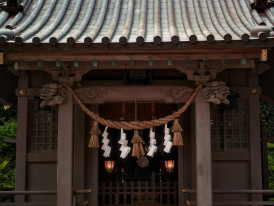
Traditional shrine architecture details Photo by Florian Peeters on Unsplash
Evening Shrine Visits for Peace
Late afternoon shrine visits offer entirely different experiences compared to morning Zen temple touring. As tour groups depart and day-trippers head to stations, Kyoto's spiritual sites regain their contemplative atmosphere.
The transition period between 4:00-5:30 PM creates ideal conditions for shrine visits. Most organized tours complete their schedules by 4:00 PM, leaving popular sites significantly less crowded. This timing also coincides with late afternoon light that enhances architectural photography while maintaining enough daylight for safe navigation.
Understanding the difference between shrines and temples enhances late-day spiritual experiences. Shrines typically feature torii gates, purification fountains, and nature-focused spiritual practices. Temples contain Buddha statues, meditation halls, and often charge entrance fees. Both deserve respectful behavior, but shrines often provide more accessible spiritual experiences for international visitors.
Recommended Late-Day Shrines
Yasaka Shrine in the Gion district offers convenient access while providing an authentic spiritual atmosphere. The shrine's elevated position provides city views, and Maruyama Park connects for cherry blossom viewing during spring.
Heian Shrine features extensive gardens and traditional architecture. Late afternoon visits often coincide with local worshippers conducting personal ceremonies.
Fushimi Inari's upper levels offer different experiences from morning visits. These upper paths remain relatively empty, providing meditative walking among thousands of torii gates.
Proper Shrine Etiquette
Use the purification fountain to cleanse hands and mouth before approaching main shrines. Prayer practices follow specific protocols: bow twice, clap twice, pray silently, bow once more.
Plan to complete shrine visits by 5:30 PM to ensure adequate time for return transportation to Osaka.
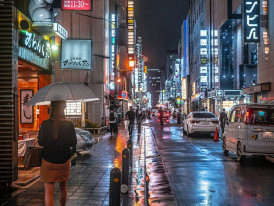
Late evening street scene in Osaka. Photo by masahiro miyagi on Unsplash
Returning to Osaka with Options
Early returns to Osaka create opportunities rather than schedule problems. Strategic planning for return timing allows extending your cultural exploration within Osaka itself, trying restaurants unavailable during rushed travel days, or simply enjoying well-deserved relaxation after intensive sightseeing.
JR Special Rapid trains from Kyoto Station to JR Osaka Station maintain frequent service until late evening, typically every 15-20 minutes. The 29-minute journey provides comfortable transitions between cities while allowing flexibility in departure timing. Later trains often offer more available seating as business commuters complete their journeys.
Jr Shin-Osaka Station, on the other hand, is the designated station for the Shinkansen (bullet train), connecting Osaka with other major Japanese cities.
If your day trip concludes earlier than anticipated, consider exploring additional Kyoto neighborhoods rather than immediately returning to Osaka. The flexibility of JR Pass usage eliminates concerns about additional transportation costs for extended exploration.
Evening Osaka Dining Options
Returning to Osaka before 6:00 PM opens numerous dining and entertainment possibilities unavailable during typical travel schedules. Osaka's food culture truly comes alive during evening hours, with street food vendors, izakayas, and specialty restaurants offering experiences that complement your Kyoto cultural immersion.
Dotonbori district becomes particularly vibrant during evening hours. The neon lights, riverside dining, and energetic atmosphere provide stark contrast to Kyoto's traditional ambiance. This cultural juxtaposition—ancient Kyoto followed by modern Osaka—demonstrates the diversity within Japanese urban experiences.
Shinsekai district specializes in traditional Osaka dining experiences, particularly kushikatsu and local brewery products. Evening exploration here provides authentic Osaka cultural experiences that many day-trippers miss due to schedule constraints.
Alternative Evening Activities
Umeda Sky Building offers panoramic city views during sunset hours. The observation deck provides perspective on Osaka's urban landscape while allowing reflection on your day's cultural experiences.
Osaka Castle remains illuminated until 8:00 PM, providing evening touring opportunities. Public baths throughout Osaka offer relaxation after full days of walking and temple exploration.
Flexible Evening Planning
Build buffer time into your return schedule rather than planning activities requiring precise timing. Day trips naturally involve unexpected delays and spontaneous discoveries that rigid schedules can't accommodate.

Train platform at golden hour Photo by Josiah Ferraro on Unsplash
Why Self-Guided Beats Tours Every Time
After hundreds of journeys between Osaka and Kyoto, I've never once regretted choosing train-based self-guided exploration over organized tour alternatives on a Kyoto trip. The freedom to adjust timing, explore spontaneous discoveries, and move at your own pace transforms cultural sightseeing from checklist completion into meaningful personal experience.
Organized tours operate on fixed schedules that prioritize efficiency over experience quality. Tour groups spend predetermined time at each location regardless of individual interest levels or optimal viewing conditions.
When I visit Fushimi Inari at dawn, I experience a spiritual atmosphere that tour groups arriving at 10:30 AM completely miss. Self-guided travel allows responsive decision-making throughout your day.
Individual day trips from Osaka to Kyoto cost approximately ¥2,000-3,000 per person using JR Pass options, including all transportation within both cities. Comparable organized tours typically charge ¥8,000-12,000 per person while providing less flexibility.
Self-guided travel necessitates interaction with local transportation systems, navigation tools, and occasionally language barriers that create authentic cultural experiences. These challenges provide confidence and cultural understanding that no tour guide can deliver through explanation alone.
Every traveler brings different interests, energy levels, and curiosity focus to cultural exploration. Self-guided approaches allow emphasizing temples over gardens, spending extra time with deer in Nara, or skipping popular sites in favor of neighborhood wandering.
Easy day trips from Osaka provide foundations for exploring beyond typical tourist circuits throughout the Kansai region. The skills developed through independent Kyoto exploration apply directly to other destinations like Nara, Kobe, or even day trips to more distant cities.
Planning and executing successful day trips provides satisfaction that pre-arranged tours can't match. When you successfully navigate from Osaka to Fushimi Inari at sunrise, capture perfect Golden Pavilion photographs, and discover hidden shrines through personal exploration, the achievement belongs entirely to you.
City Unscripted experiences are never one-size-fits-all, but rather personalized adventures that honor individual interests while providing authentic cultural immersion. For Osaka experiences that complement your independent Kyoto explorations, consider connecting with local guides who understand the value of flexible, personalized cultural discovery.
The trains between Osaka and Kyoto run frequently and efficiently, temple gates open early for peaceful visits, and countless discoveries await travelers willing to step beyond tour bus comfort zones. Your perfect day trip from Osaka to Kyoto starts with boarding that first Special Rapid train and embracing the adventure that independent exploration provides.
Most importantly, remember that the best itinerary is the one that matches your personal interests and energy levels rather than checking off predetermined boxes.
Transportation apps like Google Maps work excellently for real-time train schedules and platform information throughout the Kansai region.
Station staff at major terminals speak basic English and provide helpful assistance with route planning when needed.
Emergency contact information should include your hotel details and important phone numbers stored in both English and Japanese characters for easier communication.

